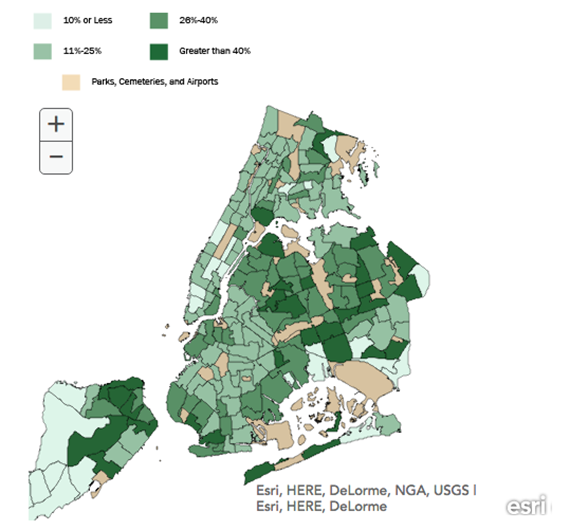Trending
Here are the nabes where rent regulation is most needed
Large share of NYC’s fixed-rate units rent at discount: IBO

In neighborhoods like Greenwich Village or the Upper East Side, rent regulation is the only thing keeping low-income families from getting swept out by the tide of monied demand. But in many other parts of New York, it’s barely necessary and landlords actually charge less than regulations allow.
About 175,000 of New York State’s 765,354 regulated units rent at a so-called preferential rate, according to state data crunched by the Independent Budget Office. In other words: these landlords couldn’t find tenants at the regulated rate and had to lower the rent below its fixed level.
As the map above shows, Staten Island and Queens have the highest concentration of preferred-rate apartments. In Staten Island’s Oakwood neighborhood, 62 percent of rent-regulated units rent at a preferred rate – a city record just ahead of Fresh Meadows, Queens with 61 percent. Unsurprisingly, Manhattan sits at the other end of the spectrum. The West Village and the Upper West Side had the lowest share of preferred-rate units at 10 percent each.
However, the report also notes that Manhattan’s preferential-rate units have the biggest spread between the fixed rent landlords could charge and the actual rent. Its median discount of $453 is well ahead of Staten Island’s $423, Queens’ $354, the Bronx’ $307 and Brooklyn’s $303.
“Barring substantial increases in market rents in the neighborhoods with large shares of regulated units with preferential rates, continued regulation might not make much difference in determining the cost of housing for tenants in those areas,” the report’s author Sarah Stefanski notes.
Perhaps the most obvious conclusion for real estate investors is that neighborhoods with a high share of preferential-rate apartments are unattractive. But according to Daniel Parker, a broker and senior vice president at Hodges Ward Elliott, these neighborhoods are especially promising because low rents signal the potential for growth.
“Preferential rents allow (investors) to invest in assets and raise their quality, while making a return on that investment,” he said.
Shimon Shkury, president of Ariel Property Advisors, agreed. “As long as apartment records are properly maintained, preferential rents are a great opportunity for owners and investors,” he said. “They serve as a placeholder for higher rents in the future and give owners the chance to immediately raise revenues when the market catches up.”




